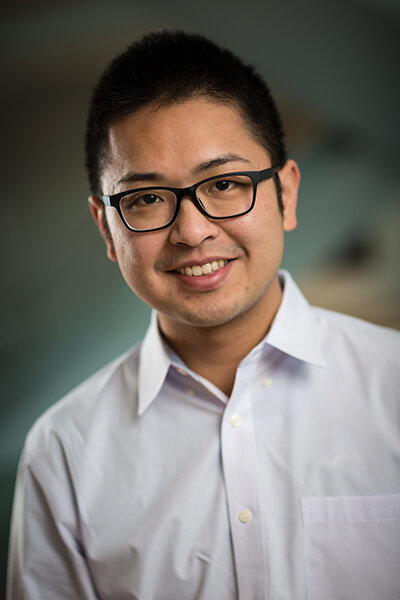SDRC New Member Spotlight: Dr. Danny Chou
“A game changer” is how SDRC’s newest member, Dr. Danny Chou describes the development of Smart Insulin, a type of insulin formulation that can maintain normal blood sugar levels without the accompanying risk of hypoglycemia. A chemist by training, Dr. Chou is deeply interested in pursuing the development of therapeutically useful insulin analogs for type 1 diabetes (T1D).
In April, 2020, Dr. Chou joined the Stanford faculty in the Department of Pediatrics in the School of Medicine, and also became a member of the Stanford Diabetes Research Center (SDRC). He is excited to join the Stanford and SDRC community of researchers, noting, “The depth and breadth of research is a highly attractive force for my group. Particularly, we are excited about the potential for collaborations, including with the closed-loop insulin delivery team [led by SDRC members Bruce Buckingham, David Maahs – the associate director of the SDRC, Darrell Wilson, Korey Hood, and others] to evaluate some of the novel insulin analogs we are working on”.
The SDRC had a key role in bringing Dr. Chou to Stanford. After an initial meeting at a research seminar, Seung Kim – the SDRC director - invited Dr. Chou to present his work in the regular SDRC research seminar series, and in the Department of Medicine’s Endocrinology Grand Rounds in 2018. This helped to lay the groundwork for building collaborations with SDRC members, and helped convince Dr. Chou make the move to Stanford. “[Stanford] is a fantastic playground for a chemist like myself to make impacts to improve the daily life for people with T1D by developing new insulin therapeutics”, Dr. Chou says.
Dr. Kim states, “Danny Chou is a world-class chemist and insulin biologist, an unusual and potent combination of expertise. We have benefitted working with him in multiple areas, using systems like pigs and fruit flies. We are delighted and fortunate to have him join the Stanford community.”
“I had an opportunity to work on pancreatic beta cells earlier in Graduate School and have fallen in love with the field of beta cells and insulin since”, says Dr. Chou. Prior to joining Stanford, Dr. Chou led a research group at the University of Utah that focused on using protein engineering approaches to create novel therapeutics for T1D patients. Currently available insulin analogs in the market, of course, have many benefits. “Still, it takes huge efforts for people with T1D to manage their blood sugar within the optimal range because of the difficulty to decide the “perfect dose” of insulin”, notes Dr. Chou. This ‘still imperfect’ aspect of insulin replacement is a key motivation for Dr. Chou’s research efforts.
Dr. Chou’s quest to perfect insulin analogs led him into the fascinating and strange world of predatory fish-hunting snails, a group of marine animals that paralyze their prey with venom that contain an ultra fast-acting insulin. “In this particular case, we were inspired by a class of venom insulin molecules with (unique) features. This led us to identify a new linkage to introduce an additional chemical bond to stabilize the insulin conformation without sabotaging potency”, he explains. The report of this novel insulin was widely heralded in the research community. In the world of diabetes care, the development of this ultrafast-acting insulin analog would be another ‘game-changer’, says Dr. Maahs.
Dr. Chou’s work stresses the importance of basic research in providing fruitful (but unforeseen) foundations for clinical applications. “Our fundamental studies on venom insulin have led to several projects for novel insulin therapeutics, which truly demonstrates the value of basic science research”. A portion of Dr. Chou’s group also studies insulin receptor signaling pathways with a specific focus toward understanding the pathways impacted by insulin binding to its receptor. “It is crucial to study whether the mutations on potential insulin analogs may impact the signaling and whether the receptor conformation differences can guide future therapeutic development”, he says.
Dr. Chou's research program has been recognized through support from a JDRF Career Development Award, a Vertex Scholar Award, and an American Diabetes Association (ADA) Junior Faculty Award. His laboratory has received support through grants from the U.S. National Institutes of Health, Department of Defense, JDRF and ADA. Once they complete their move and transition to Stanford, Dr. Chou and his team will work in the Grant Building Research labs.
By
Harini Chakravarthy
Harini Chakravarthy is a Science Writer for the Stanford Diabetes Research Center.

